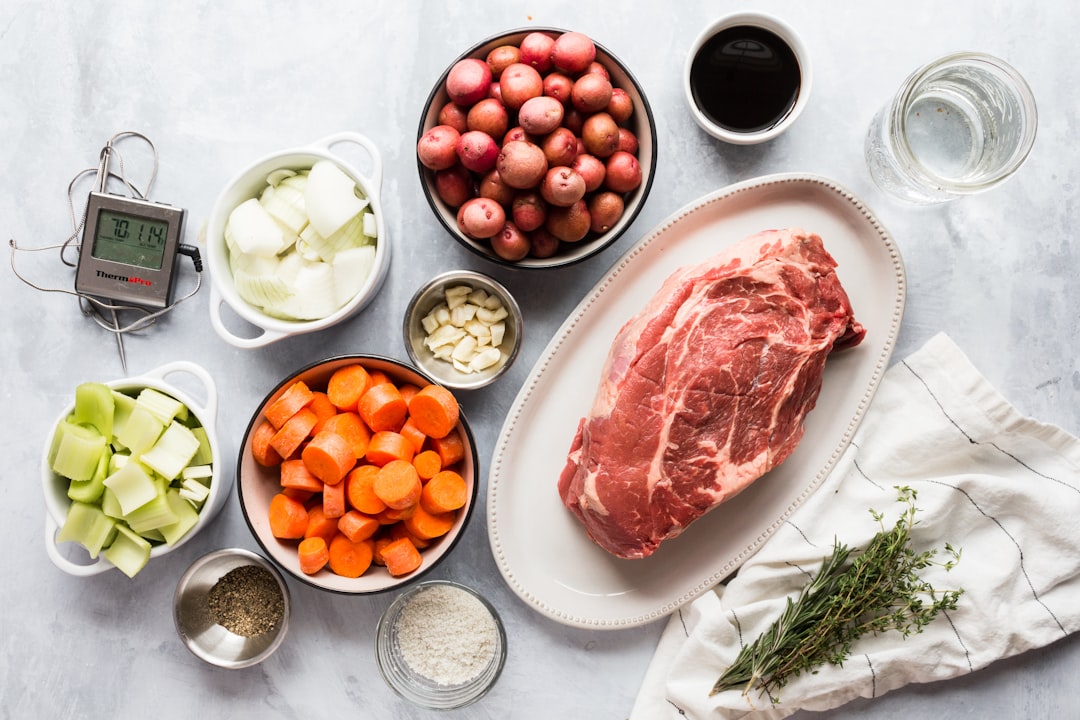The aroma of a hearty stew simmering on the stove is enough to make anyone’s mouth water, including your furry friend’s! But before you share a spoonful with your dog, it’s crucial to understand what’s safe and what’s not. So, can dogs eat stew? Let’s dive into the details and ensure your beloved canine companion enjoys only the safest and most nutritious meals.
Is Stew Safe for Dogs?
The simple answer is: it depends. Whether or not stew is safe for your dog depends entirely on the ingredients. Many common stew ingredients are perfectly safe and even beneficial for dogs, while others are highly toxic. A homemade stew carefully crafted with dog-friendly ingredients can be a nutritious and delicious meal for your pup. However, store-bought stews or those made with ingredients harmful to dogs should be strictly avoided.
Potential Health Benefits of Dog-Friendly Stew
A well-prepared, dog-friendly stew can offer several health benefits:
- Hydration: Stews are naturally high in moisture, helping to keep your dog hydrated, especially beneficial for active dogs or those prone to dehydration.
- Nutrient-Rich: If made with wholesome ingredients like lean meats and vegetables, stew can be packed with essential vitamins, minerals, and proteins.
- Digestive Health: Cooked vegetables are often easier for dogs to digest than raw ones, promoting healthy digestion.
- Palatability: Many dogs find stew incredibly appealing, making it a great option for picky eaters or dogs with decreased appetite.
Ingredients to Avoid in Stew for Dogs
These ingredients are commonly found in stews but are toxic or harmful to dogs:
- Onions and Garlic: These are highly toxic to dogs and can cause damage to their red blood cells, leading to anemia. All forms (raw, cooked, powdered, etc.) are dangerous.
- Grapes and Raisins: The exact toxin is unknown, but grapes and raisins can cause kidney failure in dogs.
- Salt: Excessive salt intake can lead to sodium ion poisoning, causing vomiting, diarrhea, and even seizures.
- Alcohol: Even small amounts of alcohol can be toxic to dogs.
- Chocolate: Contains theobromine, which is toxic to dogs and can cause heart problems, tremors, and seizures.
- Xylitol: An artificial sweetener that is extremely toxic to dogs and can cause a rapid drop in blood sugar and liver failure.
- Bones: Cooked bones can splinter and cause damage to the digestive tract.
- Fatty Trimmings: Excessive fat can lead to pancreatitis.
- Spicy Seasonings: Chili powder, hot peppers, and other spicy seasonings can irritate a dog’s digestive system.
How to Safely Introduce Stew to Your Dog
If you’re planning to feed your dog stew, follow these guidelines to ensure their safety and well-being:
- Consult Your Veterinarian: Always consult your veterinarian before introducing any new food to your dog’s diet, especially if they have any underlying health conditions or allergies.
- Start Small: Introduce stew gradually to avoid digestive upset. Begin with a small portion (1-2 tablespoons) and monitor your dog for any adverse reactions, such as vomiting, diarrhea, or loss of appetite.
- Homemade is Best: Opt for homemade stew using dog-friendly ingredients. This allows you to control exactly what your dog is eating and avoid potentially harmful additives found in store-bought versions.
- Use Lean Protein: Choose lean protein sources like chicken breast, turkey, or lean ground beef.
- Incorporate Safe Vegetables: Carrots, green beans, sweet potatoes, and peas are all excellent choices.
- Avoid Seasoning: Do not add any salt, pepper, or other seasonings to the stew.
- Cool Thoroughly: Ensure the stew is completely cooled before serving it to your dog to prevent burns.
- Monitor for Allergies: Even with safe ingredients, some dogs may be allergic to certain foods. Watch for signs of allergies such as itching, hives, or facial swelling.
Pros and Cons of Feeding Stew to Dogs
- Pros:
- Excellent source of hydration.
- Can be packed with essential nutrients.
- Highly palatable for many dogs.
- Good option for picky eaters.
- Easy to digest when made with appropriate ingredients.
- Cons:
- Many ingredients are toxic to dogs (onions, garlic, etc.).
- Store-bought stews often contain high levels of sodium and preservatives.
- Can be time-consuming to prepare homemade stew.
- Potential for digestive upset if introduced too quickly or with inappropriate ingredients.
- Risk of allergies to certain ingredients.
Frequently Asked Questions
Can I give my dog canned stew?
It’s generally best to avoid giving your dog canned stew due to the potential for harmful ingredients like onions, garlic, high sodium content, and artificial additives. Always check the ingredient list thoroughly, and when in doubt, opt for homemade stew.
What kind of meat is best for dog stew?
Lean protein sources like chicken breast, turkey, and lean ground beef are excellent choices for dog stew. These provide essential amino acids without excessive fat.
What vegetables can I safely add to my dog’s stew?
Safe vegetable options include carrots, green beans, sweet potatoes, peas, and pumpkin. Ensure they are cooked until soft and easy to digest.
How often can I feed my dog stew?
Stew should be given as a supplement to your dog’s regular diet and not as their primary food source. Feeding it 1-2 times a week in moderation is generally safe, but always consult with your veterinarian for personalized recommendations.
What should I do if my dog eats stew with onions or garlic?
Contact your veterinarian immediately if your dog has ingested stew containing onions or garlic. These ingredients are toxic and can cause serious health problems. Prompt veterinary care is crucial.
In conclusion, while stew can be a nutritious and appealing addition to your dog’s diet, it’s essential to exercise caution and prioritize safety. Always carefully select ingredients, avoid toxic substances, and introduce stew gradually. By following these guidelines and consulting with your veterinarian, you can ensure that your furry friend enjoys a delicious and healthy stew experience. Remember, when in doubt, leave it out!

